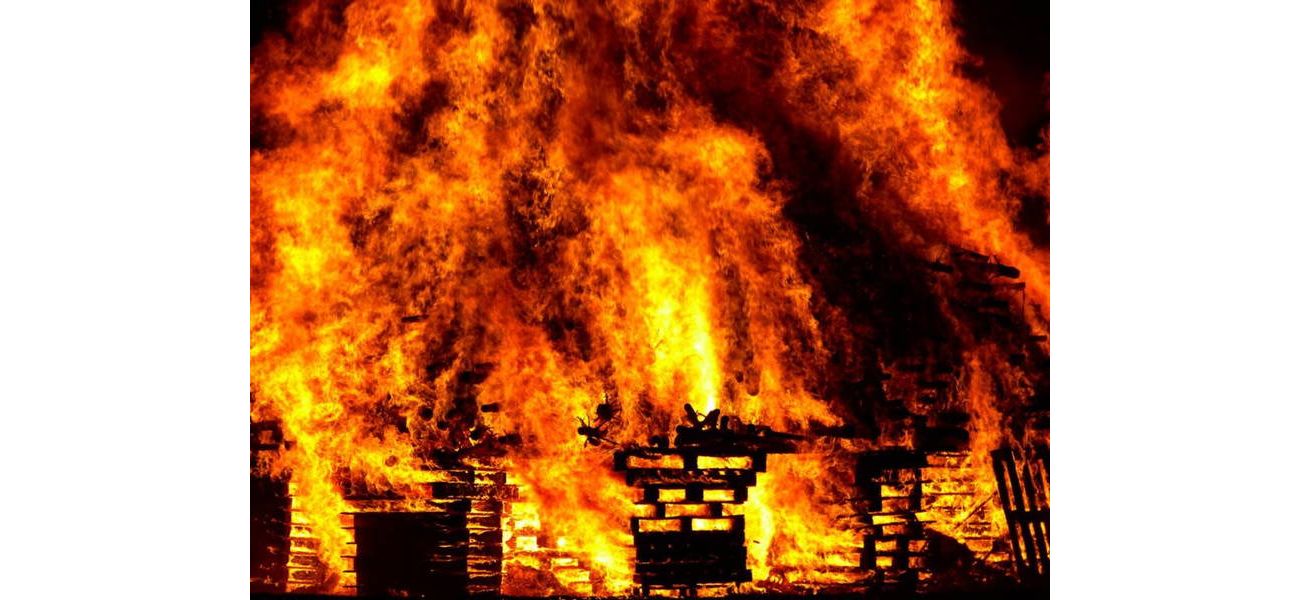Authorities are looking into a possible case of arson as the historic Clayborn Temple suffers major damage, putting a $25 million restoration project on hold.
In 1968, Rev. Martin Luther King Jr. joined the Memphis protest of over 1,000 Black sanitation workers who were on strike for better treatment and safer working conditions.
May 24th 2025.

On May 21, investigators confirmed that the fire that ravaged a historic Black church in Memphis, Tennessee was intentionally set. This church, known as Clayborn Temple, holds a significant place in history as the organizing center for the 1968 sanitation workers' strike that brought the Rev. Martin Luther King Jr. to the city.
The fire, which broke out on April 28, caused extensive damage to the interior of the church, undoing years of renovation work that had been ongoing. The Memphis Fire Department revealed that the blaze was started on the inside of the building, and they are currently searching for a suspect believed to be responsible.
The flames tore through the downtown church in the early morning hours, leaving the interior completely destroyed. Memphis Fire Chief Gina Sweat stated that while the inside of the building was likely a total loss, there is still hope for salvaging parts of the exterior facade for restoration.
A few weeks after the initial fire, the Memphis Fire Department announced that the structure had been stabilized, allowing for a thorough investigation into the true cause of the fire. It was eventually determined that the fire was intentionally set.
Anasa Troutman, the executive director of Historic Clayborn Temple, addressed the impact of the fire on May 21, stating that the church holds great significance as a place of struggle, resilience, and creativity. She expressed that while the act of violence is painful, it will not break their spirit.
Before the fire, Clayborn Temple was in the midst of a $25 million restoration effort, with the goal of preserving its Romanesque Revival architecture and cultural legacy. The plans included restoring a grand 3,000-pipe organ and transforming the site into a hub for neighborhood revitalization, complete with a museum, cultural programs, and community outreach initiatives.
Located just south of the iconic civil rights landmark Beale Street, Clayborn Temple was originally built in 1892 as the Second Presbyterian Church. In 1949, it was sold and became a cornerstone for Black congregations. It was later the site of Rev. Martin Luther King Jr.'s involvement in the 1968 sanitation workers' strike, where he showed support for over 1,000 Black workers protesting against unsafe working conditions.
During the height of the strike, Clayborn Temple held nightly meetings and was a gathering spot during marches, producing the famous "I AM A MAN" posters. In 1979, it was listed on the National Register of Historic Places.
After King's assassination and the end of the workers' strike, the church fell into disuse and remained vacant until recent restoration efforts began. Before the recent fire, approximately $8 million had been invested in renovations, with the exterior being fully restored while the interior was still a work in progress, according to Troutman.
In related news, the Episcopal Church has announced the end of its 40-year resettlement relationship with the U.S. government over white South African "refugees." This decision has sparked controversy and discussions about the role of the church in addressing global issues.
The fire, which broke out on April 28, caused extensive damage to the interior of the church, undoing years of renovation work that had been ongoing. The Memphis Fire Department revealed that the blaze was started on the inside of the building, and they are currently searching for a suspect believed to be responsible.
The flames tore through the downtown church in the early morning hours, leaving the interior completely destroyed. Memphis Fire Chief Gina Sweat stated that while the inside of the building was likely a total loss, there is still hope for salvaging parts of the exterior facade for restoration.
A few weeks after the initial fire, the Memphis Fire Department announced that the structure had been stabilized, allowing for a thorough investigation into the true cause of the fire. It was eventually determined that the fire was intentionally set.
Anasa Troutman, the executive director of Historic Clayborn Temple, addressed the impact of the fire on May 21, stating that the church holds great significance as a place of struggle, resilience, and creativity. She expressed that while the act of violence is painful, it will not break their spirit.
Before the fire, Clayborn Temple was in the midst of a $25 million restoration effort, with the goal of preserving its Romanesque Revival architecture and cultural legacy. The plans included restoring a grand 3,000-pipe organ and transforming the site into a hub for neighborhood revitalization, complete with a museum, cultural programs, and community outreach initiatives.
Located just south of the iconic civil rights landmark Beale Street, Clayborn Temple was originally built in 1892 as the Second Presbyterian Church. In 1949, it was sold and became a cornerstone for Black congregations. It was later the site of Rev. Martin Luther King Jr.'s involvement in the 1968 sanitation workers' strike, where he showed support for over 1,000 Black workers protesting against unsafe working conditions.
During the height of the strike, Clayborn Temple held nightly meetings and was a gathering spot during marches, producing the famous "I AM A MAN" posters. In 1979, it was listed on the National Register of Historic Places.
After King's assassination and the end of the workers' strike, the church fell into disuse and remained vacant until recent restoration efforts began. Before the recent fire, approximately $8 million had been invested in renovations, with the exterior being fully restored while the interior was still a work in progress, according to Troutman.
In related news, the Episcopal Church has announced the end of its 40-year resettlement relationship with the U.S. government over white South African "refugees." This decision has sparked controversy and discussions about the role of the church in addressing global issues.
[This article has been trending online recently and has been generated with AI. Your feed is customized.]
[Generative AI is experimental.]
0
0
Submit Comment





